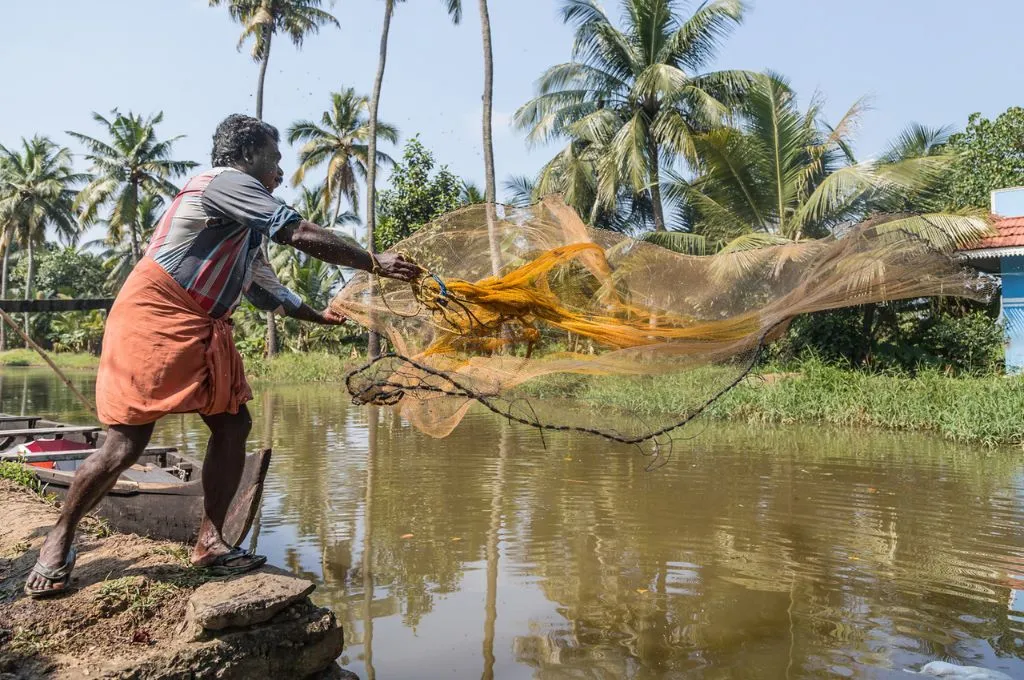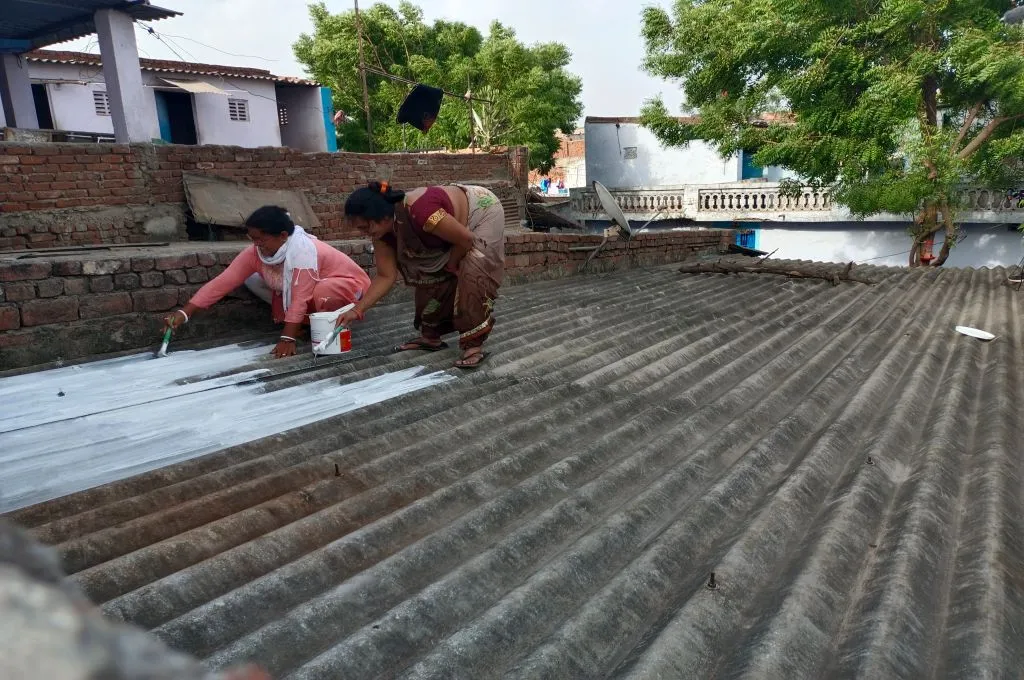Delhi has an estimated 2–2.5 lakh urban homeless people. From June 11 to 19, 2024, Delhi witnessed one of the worst heatwaves in its history, during which 192 homeless people reportedly lost their lives. Rising global temperatures and associated climate events disproportionately affect the urban poor, especially the homeless, many of whom are also from marginalised castes. Thermal inequity—the unequal distribution of heat in particular areas, leading to constant exposure to heat stress during the day and rough sleeping at night—makes the homeless significantly vulnerable to several risks.
While the 2024 heatwave may have subsided, climate experts have repeatedly warned that conditions are only going to get worse. This article looks into how poverty, gender, and homelessness intersect to impact the lives of the most marginalised in the capital city. It also explores what Delhi’s planners and policymakers can learn from their counterparts in other states in India and around the globe.
Fear of harassment and the right to sleep
According to a recent study by the Housing and Land Rights Network, approximately 99 percent of homeless individuals in Delhi experience sleeplessness due to extreme heat. However, women and children, in particular, struggle with sleepless nights due to the fear of harassment and the absence of a safe place.
Ruksar, 19, lived in Ballabgarh, Haryana, for years before her jhuggi was demolished, forcing her to find shelter in neighbourhoods of Delhi. During the heatwave, she told us, “I am currently living under a tarpaulin sheet in Shaheen Bagh but go to Nehru Place to catch some sleep under a tree. How can I sleep at night with my two children? One must always stay alert. You don’t know who will come and threaten you.” She added, “It’s too hot for my children to sleep. I end up fanning them with a cardboard or a hand fan to help them sleep.”
According to Neha Saigal, director for gender and climate change at Asar, “Heatwaves have serious physical and mental health impacts on homeless women. Constant threats to safety, lack of sleep, and the stress of looking for meals add to these challenges.”
Homeless people, including women, also face harassment from the police. Shanta, 33, living on Yamuna Pushta (embankment) near Kashmiri Gate, reported, “If we sleep anywhere near the road, the police beat us at night and drive us away. They don’t even let us sleep by the Yamuna.”
Homeless shelters and mitigation measures
With Delhi’s current shelter system unable to serve even one out of 10 homeless people, the majority are left to endure the scorching heat. Delhi Urban Shelter Improvement Board (DUSIB) is the key shelter monitoring agency in Delhi. Given the increased severity of heat, DUSIB needs to both increase the number of shelters as well as improve the conditions in the existing ones.
Porta cabins were meant to be temporary shelter measures, but they radiate a lot of heat, making the space inside unbearable.
“Run-down coolers and inadequate water supply exacerbate the impact of heat on the homeless population,” said Indu Prakash, an activist and member of Delhi’s State Level Shelter Monitoring Committee (SLSMC), constituted by the Supreme Court in 2018. SLSMC is responsible for monitoring and ensuring the effective implementation and operation of shelters for the urban homeless.
Indu added, “Nine shelters at Yamuna Pushta were demolished and five shelters at Dandi Park were closed. If these shelters had not been dismantled, they would have been helpful in serving some people under the state’s heat action plan (HAP).” Tailored by the local bodies in various states and cities in India, HAPs aim to increase preparedness and lower the adverse impacts of extreme heat by outlining strategies and measures to prepare for, address, and recover from heatwaves.
Delhi has 195 shelters, of which 103 are temporary porta cabins made of materials that absorb more heat. A woman at a shelter near Britannia Chowk, who chose to remain anonymous, stated, “Sitting inside the shelter is even worse during the day. We sit under the flyover and come to the shelter only to sleep in safety.”
Indu confirmed, “Porta cabins were meant to be temporary shelter measures, but they radiate a lot of heat, making the space inside unbearable. The shelters have gradually improved, with newer ones being made from better-insulated materials instead of tin, but they are still not permanent structures. DUSIB has been working in an ad hoc manner—implementing temporary fixes rather than pursuing long-term solutions.”

The Delhi Heat Action Plan and lack of cooling measures
The Delhi government’s 2024–25 HAP has no specific interventions for the homeless. Access to public water systems and sanitation is also a challenge. Indu noted, “Piyaos [water drinking stations] are disappearing. The government is not providing public water standposts, let alone cooling stations [air conditioned shelters used during heatwaves].”
People, especially women, are not made aware of the do’s and don’ts during a heatwave.
Several women mentioned taking frequent showers and pouring water on themselves to stay cool, which they later found to be unhelpful. Abida, 32, a homeless woman living near Nizamuddin, shared, “Due to the extreme heat, I pour water on myself and my clothes, but this later causes itching on my body.” People, especially women, are not made aware of the do’s and don’ts during a heatwave. Furthermore, even when they know what to do, they lack the resources to put these measures into practice effectively.
While the National Disaster Management Authority has released a list of do’s and don’ts as a knowledge dissemination measure for the states, public awareness efforts on the ground need to be actively taken up.
What needs to be done?
The Delhi government can do a lot to mitigate the impact of climate change and heat on homeless people. It could spread awareness about available measures to counter heat, invest in infrastructural development, and make policy-level changes by learning from successful examples within India and around the world. Here are ways in which this can be done:
1. Create a state-level, gender-sensitive HAP
Delhi’s State Action Plan on Climate Change (SAPCC)—a framework of action responding to the impacts of climate change at the sub-national level—presently makes no mention of gender. It should draw inspiration from other states. The city of Ahmedabad in Gujarat launched its own HAP in 2013. Its primary objective is to alert the populations at the highest risk of heat-related illnesses and to encourage appropriate precautions. Long-term measure includes the Ahmedabad ‘cool roofs’ plan, which focuses on low-income housing for vulnerable communities. The women residing in the city’s informal settlements are trained by the Mahila Housing Trust (MHT) on the application of solar reflective paint, insulated ceilings, and modular roofs. In slum communities, MHT’s use of solar reflective paints can reduce indoor temperatures by up to 5°C. The cooling effect also leads to a 20–30 percent reduction in energy costs for residents. This is a promising example of how gender-responsive climate-resilient infrastructure can be used to not only reduce heat stress on marginalised populations but also enhance women’s skills; there is much scope for replication in cities such as Delhi.
While formulating a gender-inclusive climate action plan, policymakers in Delhi should also consider leveraging the existing ecosystem of women’s groups working on the ground. Tripura SAPCC takes a gender-sensitive perspective by acknowledging women’s role in nurturing social capital and building community resilience by strengthening women’s institutions such as self-help groups (SHGs). In a similar vein, Gujarat considers women as active agents of change and involves women from low-income groups through micro-credit schemes or by designating them as grassroots volunteers in areas such as infrastructure, finance, and health.
2. Implement adaptation measures for the homeless
Micro-adaptation measures for public health and safety—such as clean drinking water stand posts, cooling stations in public places, and climate shelters (spaces that offer thermal comfort during periods of extreme temperatures)—have to be made part of the climate action plan. Delhi can also learn from global examples, such as Austin, Texas. The city of Austin has experimented with cool pavement solutions by applying reflective coating to help reduce the heat island effect and lower temperatures. These solutions can be taken up by the government following a vulnerability assessment of areas with significant footfall, street vendors, as well as homeless people to minimise exposure to heatwaves.
The lack of a comprehensive rehabilitation policy in Delhi increases the barriers to accessing public housing schemes.
It is also extremely important to view homeless shelters beyond their immediate value of being a temporary solution to homelessness. Homeless shelters are one of the most crucial sites for surveying and understanding the needs of the most vulnerable people, which is essential to achieving the larger goal of ‘Housing for All’ as promised by the central government. Currently, the documentation of homeless people is incomplete or absent, and the lack of a comprehensive rehabilitation policy in Delhi increases the barriers to accessing public housing schemes.
Government departments and empanelled nonprofit organisations can play a crucial role by conducting and supporting the survey of the homeless and help them in obtaining social security documents to become eligible for public housing schemes such as the Pradhan Mantri Awas Yojana-Urban (PMAY-U).
The government needs to adopt a more proactive approach to ensure that the homeless too can meet the basic necessity of decent and safe housing. The actual implementation of this measure, as promised in PMAY-U and the Scheme of Shelter for Urban Homeless, will be the test of the government’s commitment to housing rights for the millions of unsheltered people in India.
—






